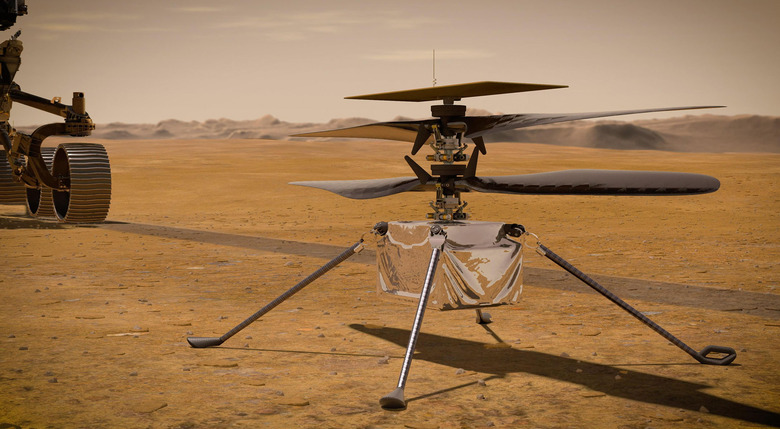NASA Now Knows What Went Wrong With Its Mars Helicopter
All eyes were on Mars this past weekend when NASA had scheduled the first flight of its Ingenuity helicopter. It was supposed to be a monumental moment for NASA, the scientific community, and humanity as a whole, but it ended with a whimper as NASA had to delay the test flight due to some messed up data it received from the tiny aircraft. It wasn't immediately clear what the problem was, and that was perhaps the most worrisome aspect of the delay, but it now looks like NASA has figured things out and will be able to fix the helicopter without much trouble.
NASA originally noticed a problem when they switch the helicopter over from a pre-flight mode to flight mode, which is essentially telling the helicopter that it's about to fly. In doing this, the helicopter returned a worrisome alert its engineers have been working to figure out what might have caused the red flag ever since. In a new update, NASA says that it has things pretty much figured out and will be able to correct the error with a simple software update. That's the good news, but there is also some bad news.
As you can probably imagine, the software that runs an autonomous aircraft built to fly on another planet is, well, pretty complicated. NASA says that it can build the update easily, but sending it to Mars and going through all of the vital checks will take some time.
While the development of the new software change is straightforward, the process of validating it and completing its uplink to Ingenuity will take some time. A detailed timeline for rescheduling the high-speed spin-up test and first flight is still in process. The process of updating Ingenuity's flight control software will follow established processes for validation with careful and deliberate steps to move the new software through the rover to the base station and then to the helicopter.
The good thing about all of this is that the helicopter has a friend alongside it as it gets its new smarts. The Perseverance rover, which is hanging out in the area where it dropped the chopper off, acts as a base station that will receive the software update and then push that new program to the helicopter itself. It's a slick little process that NASA believes will work well, and we'll get to see it in action for the first time.
Once the software is built, the update will be sent to the helicopter, at which point a number of other system checks have to be performed. Once booted up on the new software, the helicopter will need to spend several Martian days just chilling out before it can even begin its flight test. That means the tentative "no earlier than" date of this coming Thursday is out the window, and it may be a week or even several weeks before NASA feels comfortable taking the helicopter for a spin.
